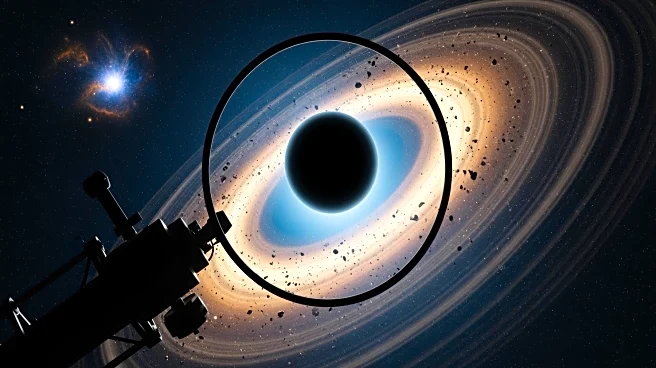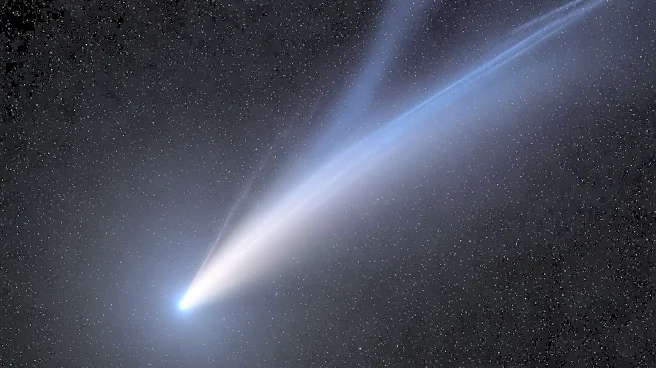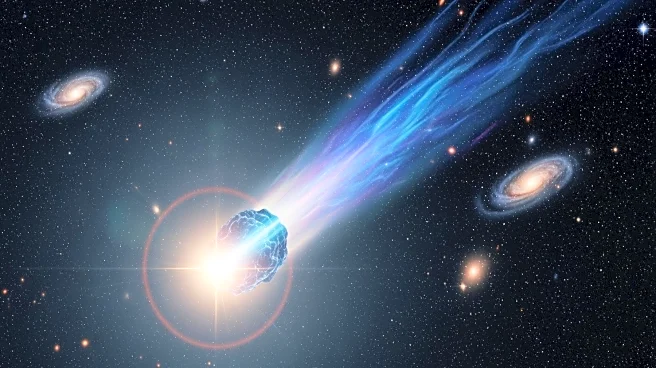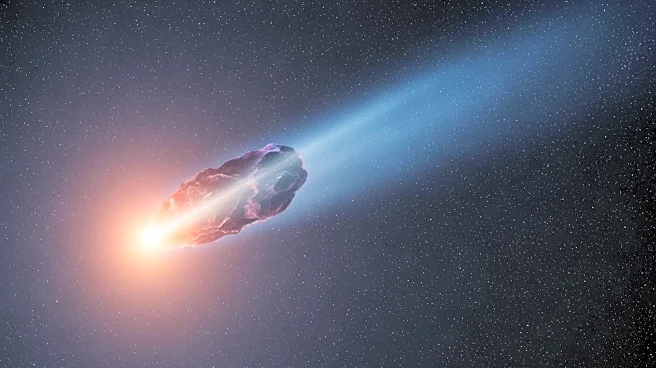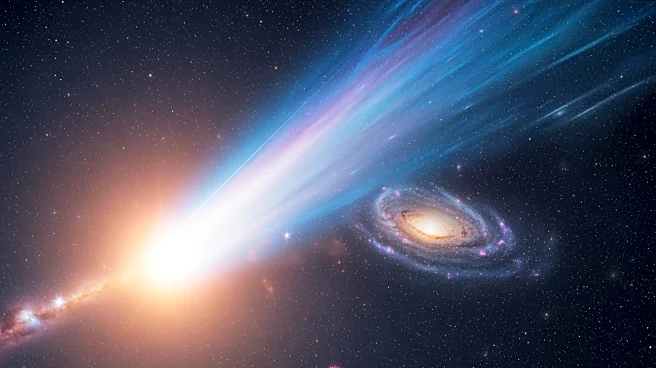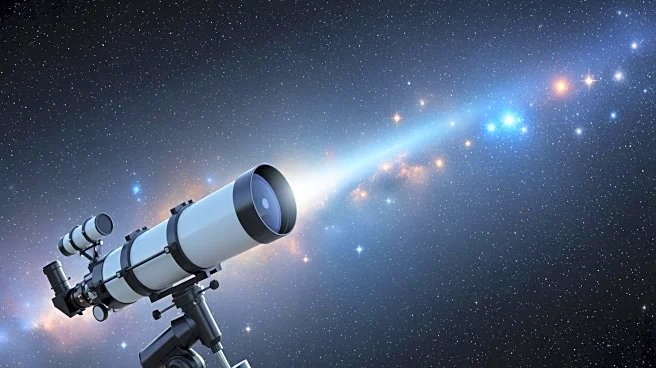What's Happening?
Astronomers have discovered a planet named GJ 251 c, which bears a striking resemblance to Earth. This discovery comes after two decades of research and is significant due to the planet's potential to support
life. Located 18 million light-years away, GJ 251 c is situated in the habitable zone of its star, a red dwarf that is half as hot as the Sun and has 36% of its mass. The planet's proximity to its star, at just 12 million kilometers, suggests conditions that could allow life to develop. The discovery was facilitated by the Habitable Zone Planet Finder, a spectrograph that measures infrared signals from nearby stars. Suvrath Mahadevan, an astrophysicist, highlighted the planet as a prime candidate for future studies on atmospheric life signatures.
Why It's Important?
The discovery of GJ 251 c is a significant milestone in the search for extraterrestrial life. It represents one of the most promising candidates for finding atmospheric signatures of life beyond Earth. The planet's location in the habitable zone of its star increases the likelihood of it having conditions suitable for life. This finding could have profound implications for our understanding of life in the universe and may influence future space exploration missions. The potential for discovering life on GJ 251 c could drive advancements in telescope technology and inspire further research into exoplanets.
What's Next?
Further studies are required to confirm the presence of an atmosphere on GJ 251 c and to assess its potential for supporting life. The next generation of telescopes will play a crucial role in detecting atmospheric density and composition. As astronomers continue to explore the universe, similar discoveries may emerge, expanding our knowledge of habitable planets. The scientific community will likely focus on developing technologies to study these distant worlds more effectively, potentially leading to groundbreaking discoveries in the coming years.


